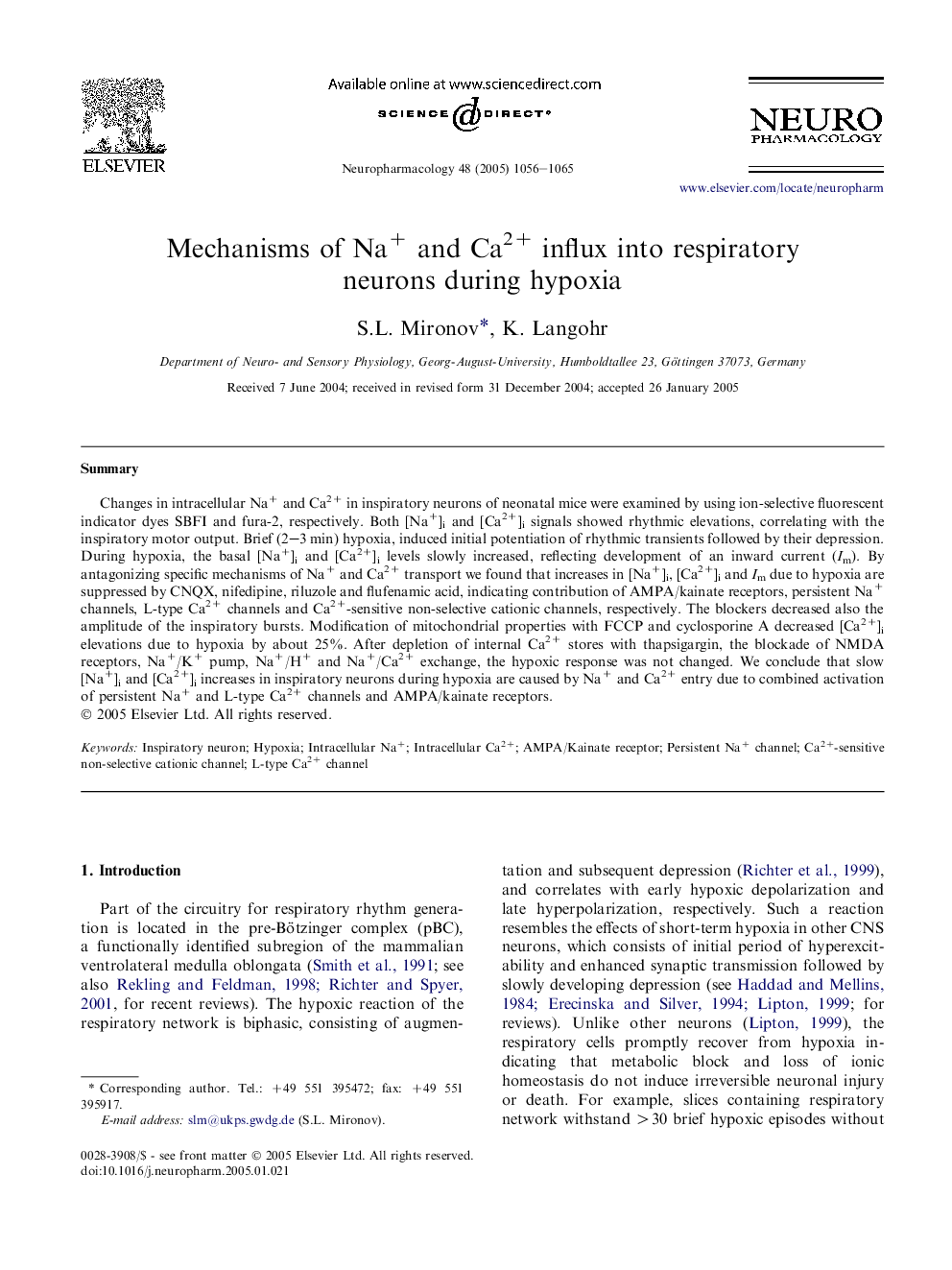| Article ID | Journal | Published Year | Pages | File Type |
|---|---|---|---|---|
| 8998437 | Neuropharmacology | 2005 | 10 Pages |
Abstract
Changes in intracellular Na+ and Ca2+ in inspiratory neurons of neonatal mice were examined by using ion-selective fluorescent indicator dyes SBFI and fura-2, respectively. Both [Na+]i and [Ca2+]i signals showed rhythmic elevations, correlating with the inspiratory motor output. Brief (2-3 min) hypoxia, induced initial potentiation of rhythmic transients followed by their depression. During hypoxia, the basal [Na+]i and [Ca2+]i levels slowly increased, reflecting development of an inward current (Im). By antagonizing specific mechanisms of Na+ and Ca2+ transport we found that increases in [Na+]i, [Ca2+]i and Im due to hypoxia are suppressed by CNQX, nifedipine, riluzole and flufenamic acid, indicating contribution of AMPA/kainate receptors, persistent Na+ channels, L-type Ca2+ channels and Ca2+-sensitive non-selective cationic channels, respectively. The blockers decreased also the amplitude of the inspiratory bursts. Modification of mitochondrial properties with FCCP and cyclosporine A decreased [Ca2+]i elevations due to hypoxia by about 25%. After depletion of internal Ca2+ stores with thapsigargin, the blockade of NMDA receptors, Na+/K+ pump, Na+/H+ and Na+/Ca2+ exchange, the hypoxic response was not changed. We conclude that slow [Na+]i and [Ca2+]i increases in inspiratory neurons during hypoxia are caused by Na+ and Ca2+ entry due to combined activation of persistent Na+ and L-type Ca2+ channels and AMPA/kainate receptors.
Keywords
Related Topics
Life Sciences
Neuroscience
Behavioral Neuroscience
Authors
S.L. Mironov, K. Langohr,
